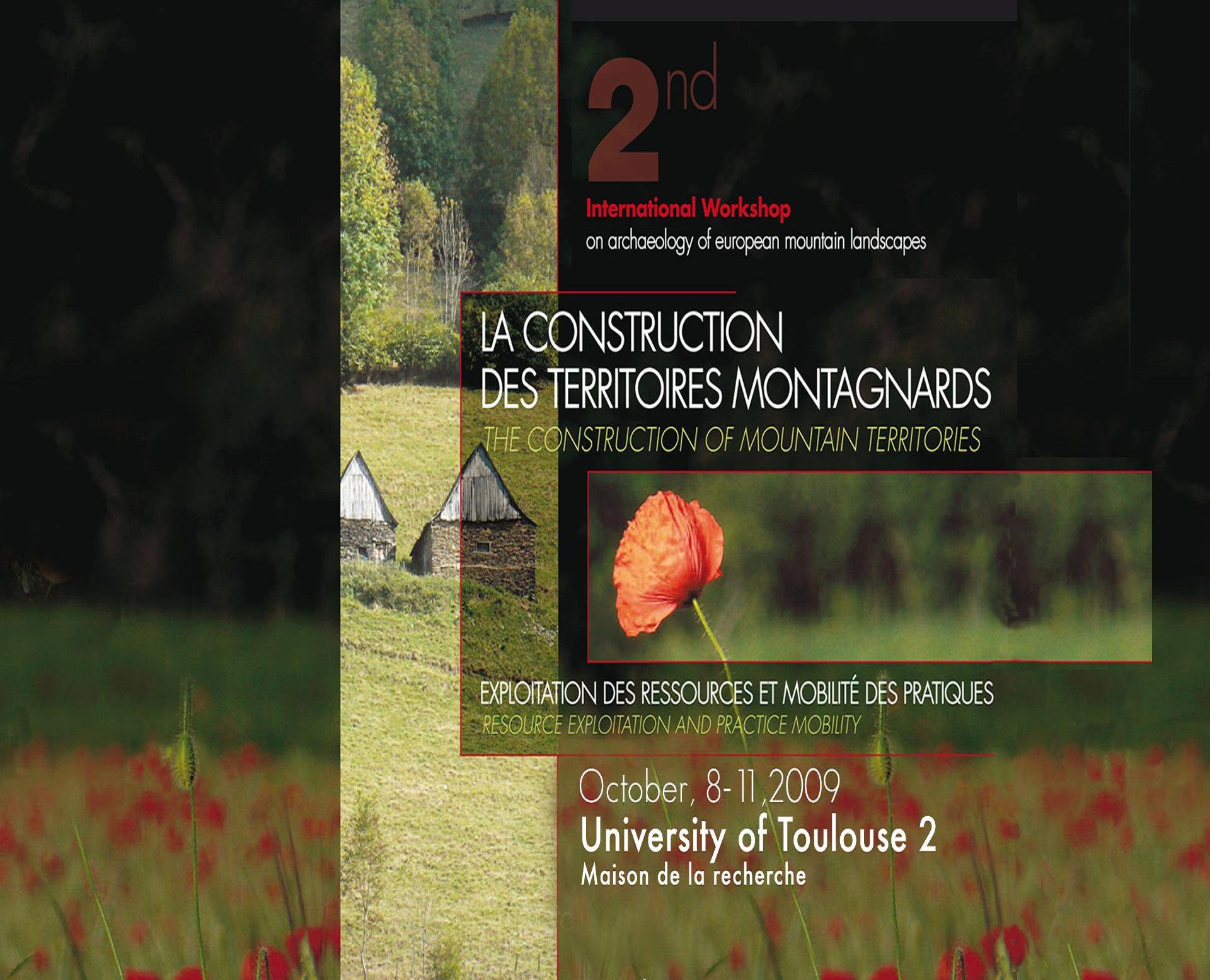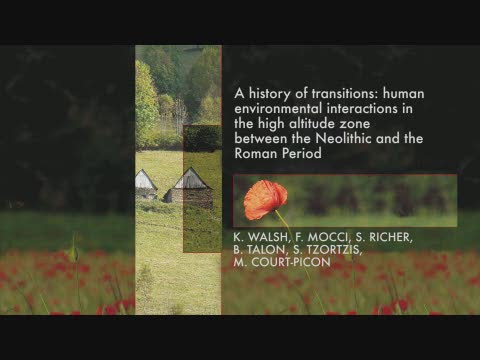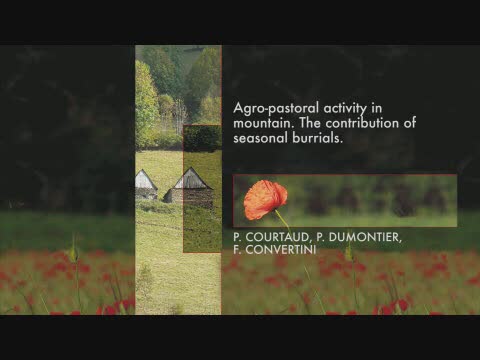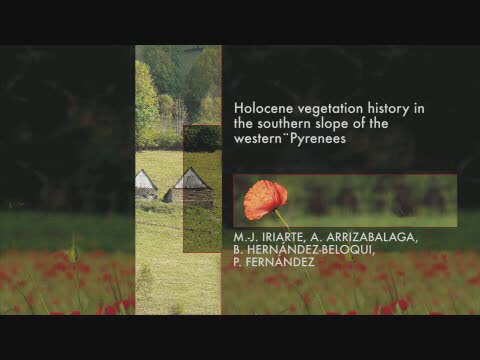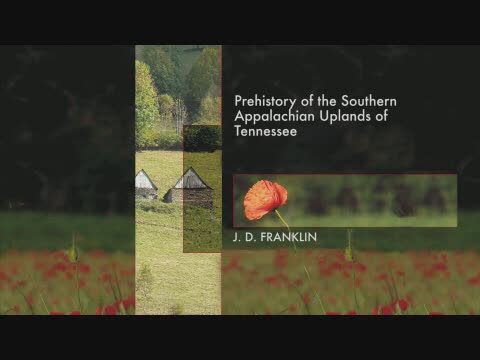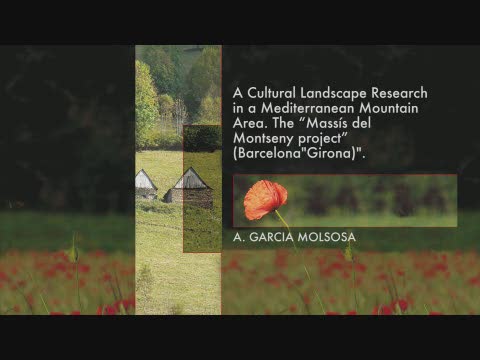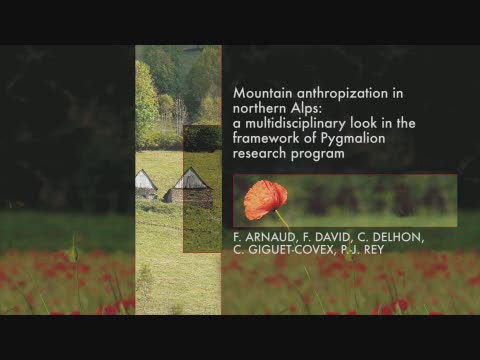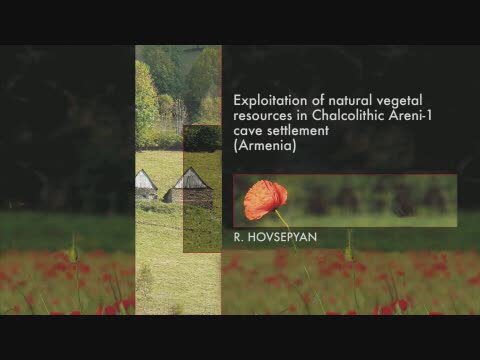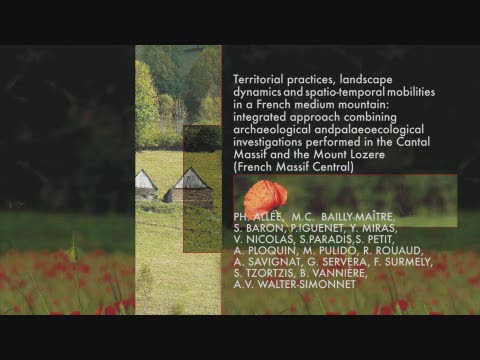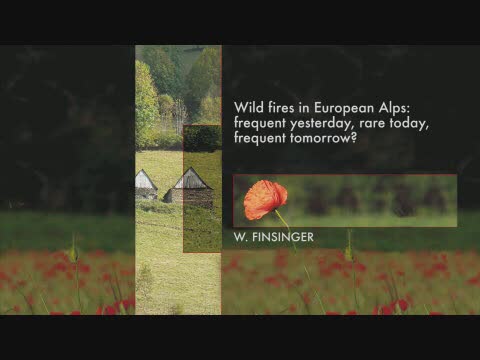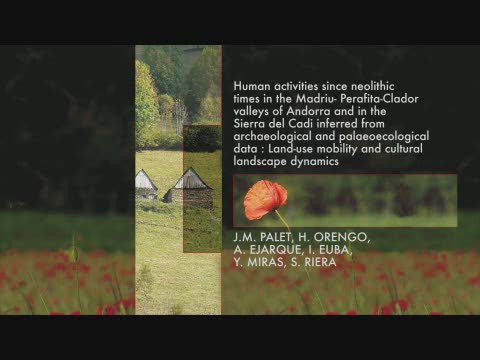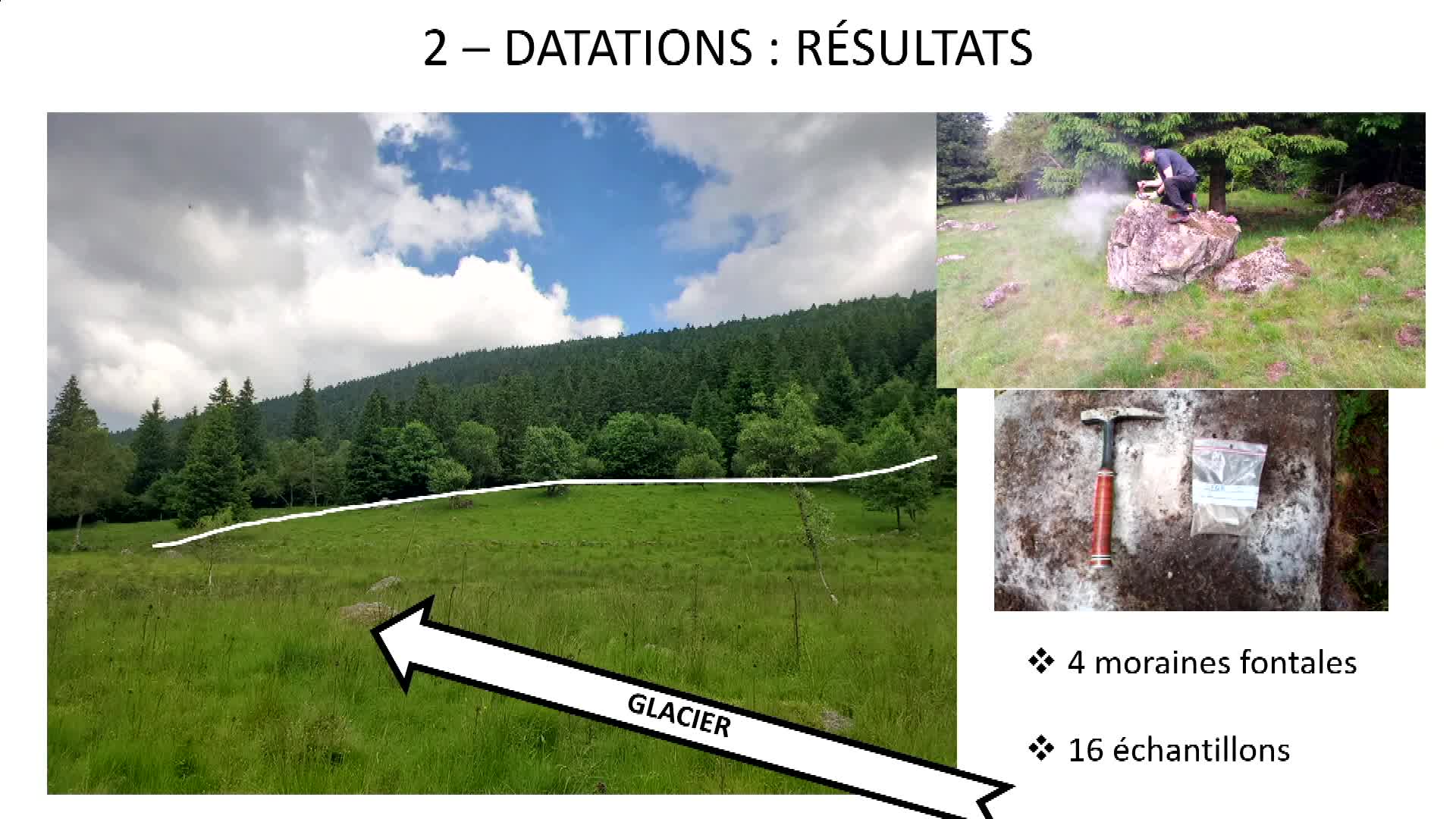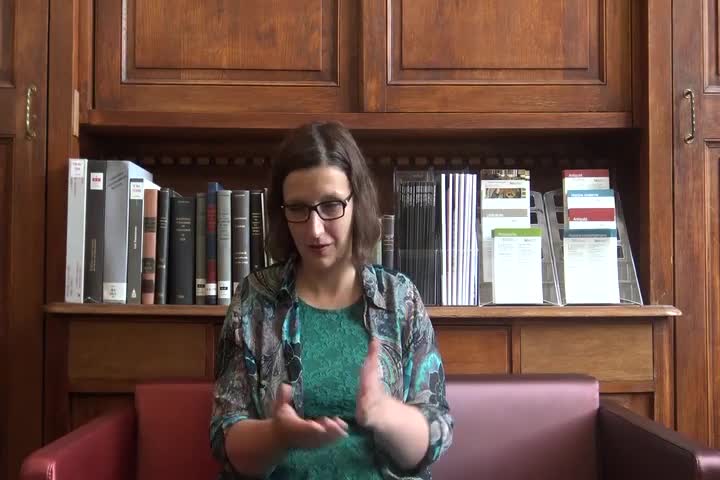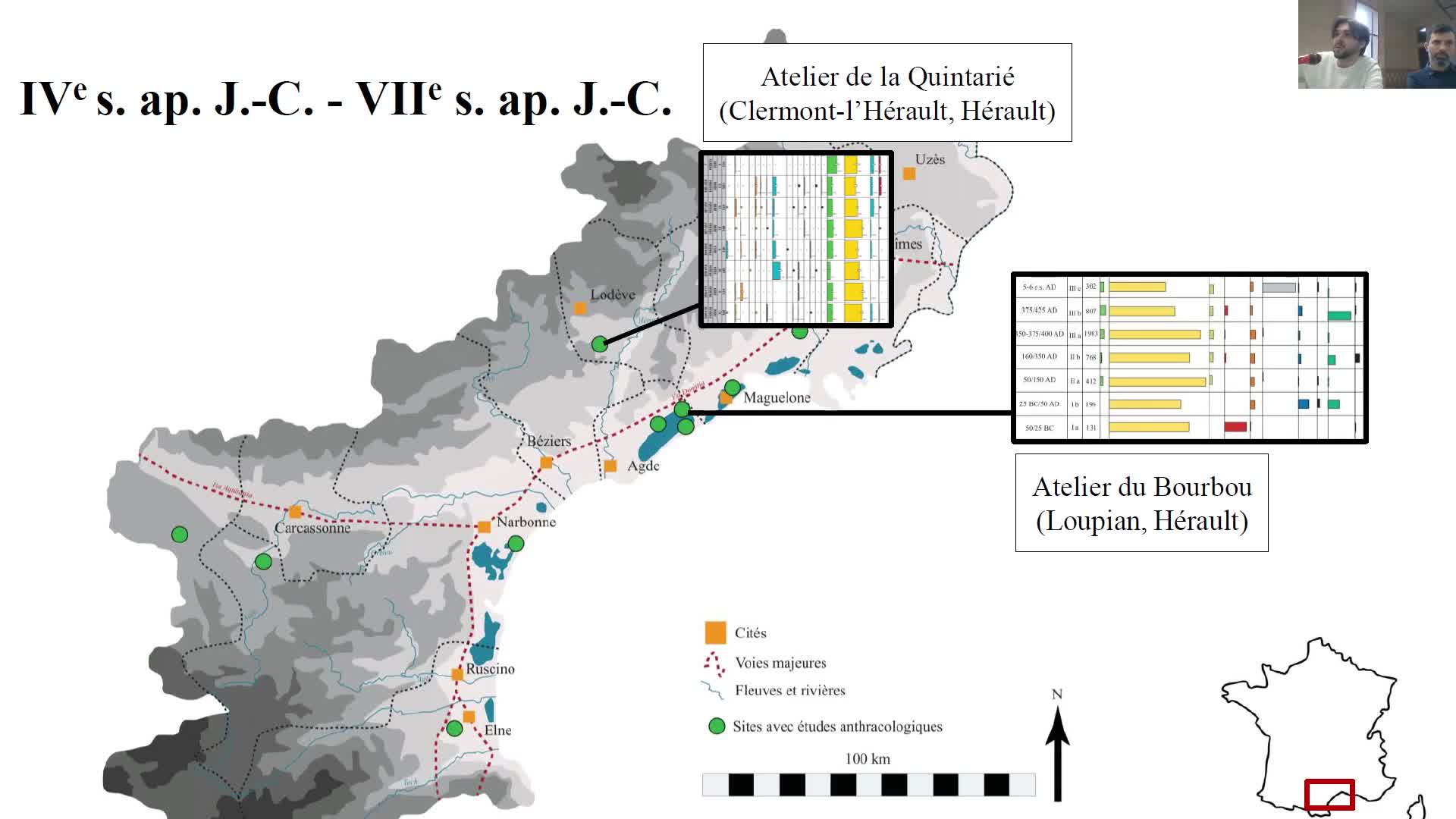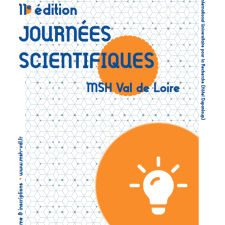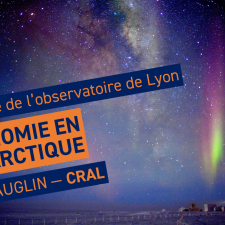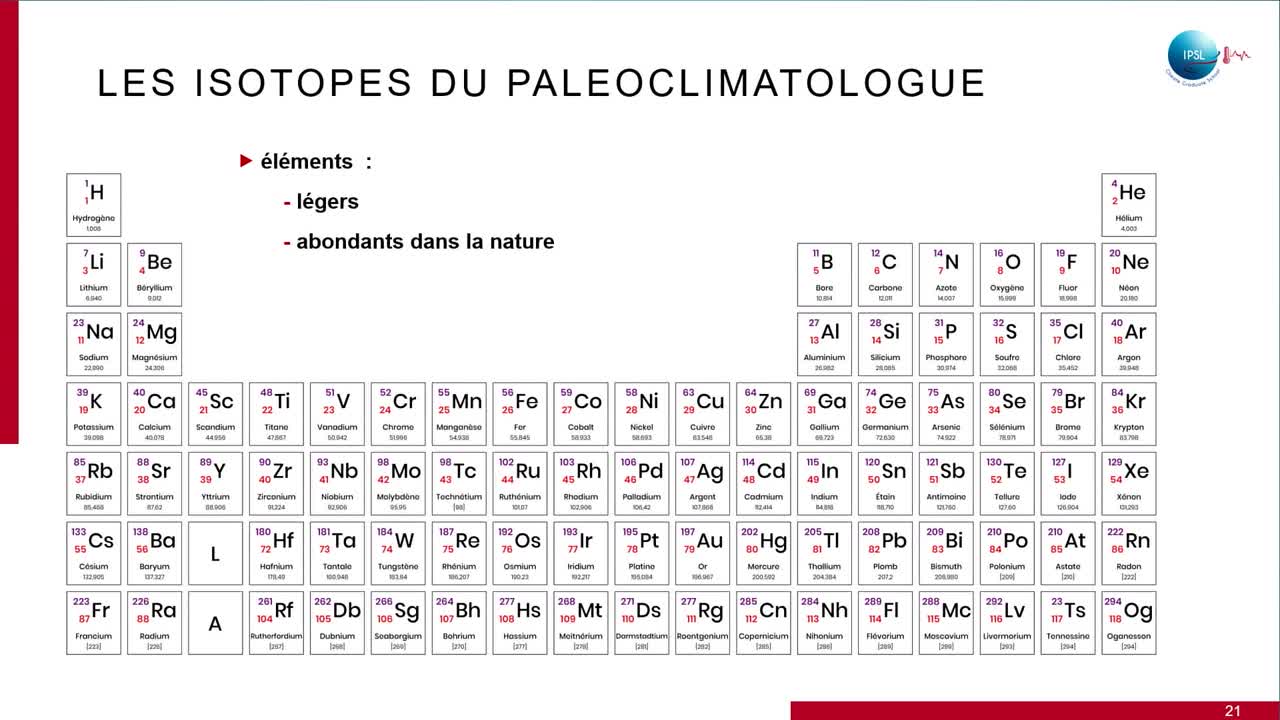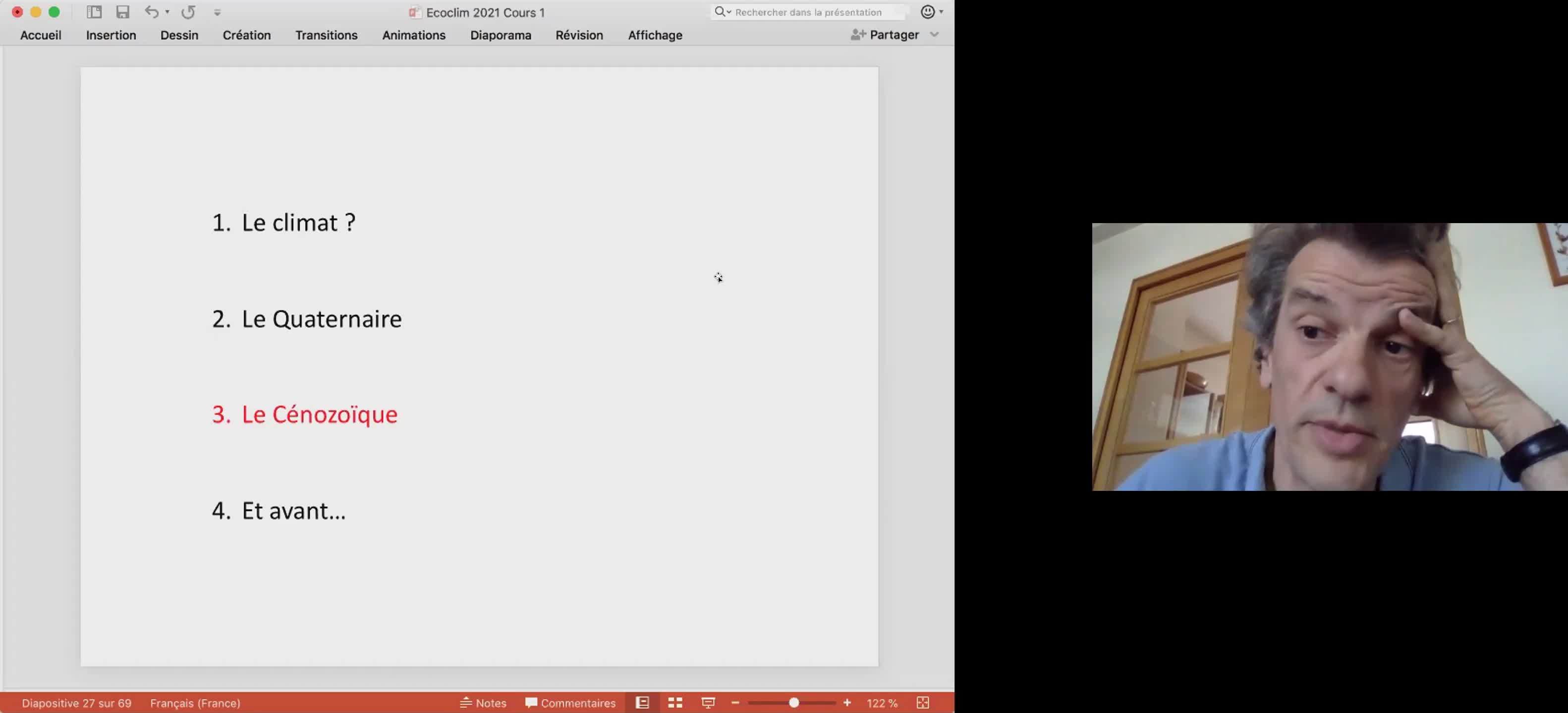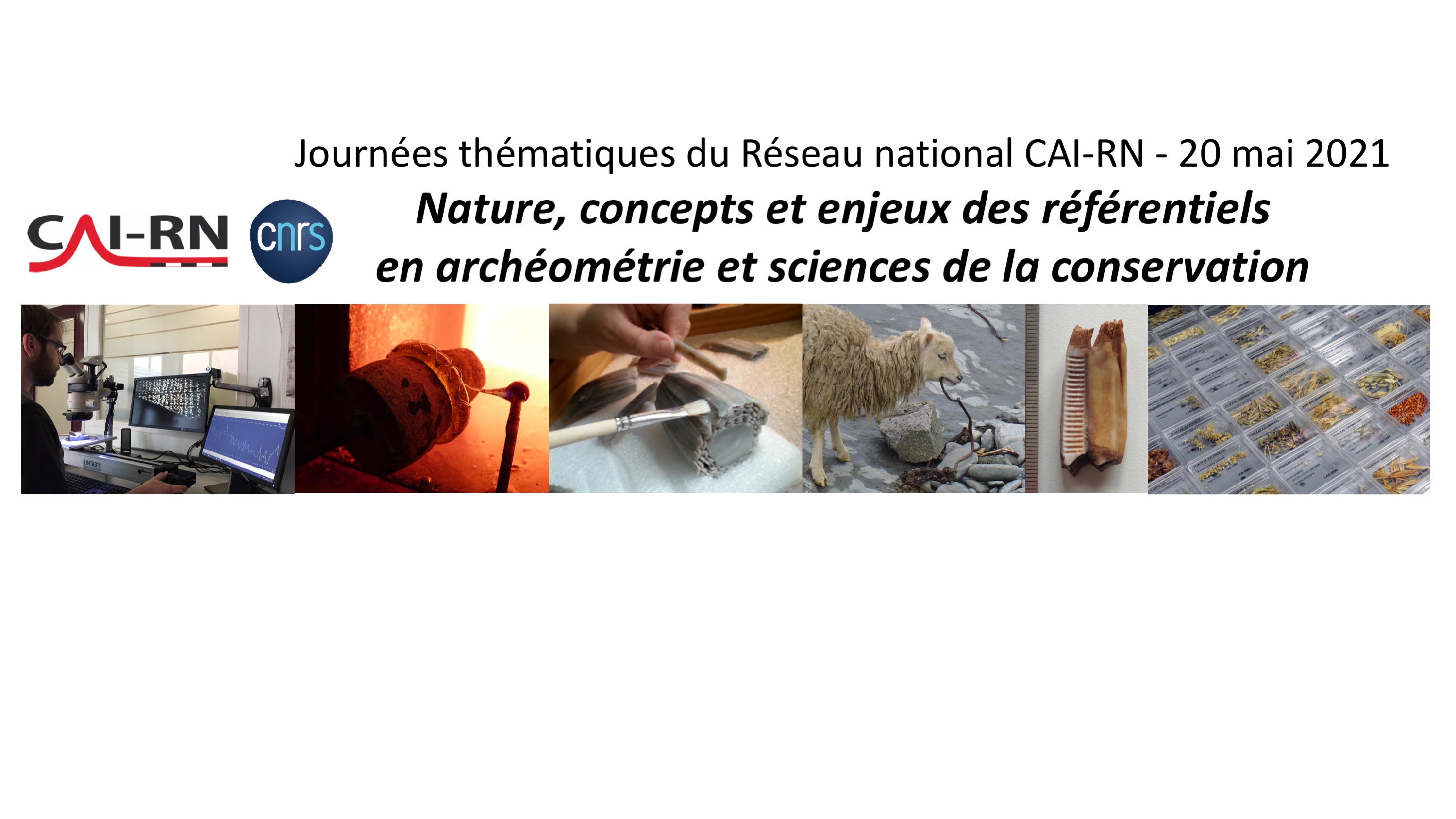Notice
Elevation-induced variations of pollen assemblages in North-Western Alps / Elena Ortu
- document 1 document 2 document 3
- niveau 1 niveau 2 niveau 3
Descriptif
Elevation-induced variations of pollen assemblages in the North-Western Alps : a model for the quantifications of lapse-rates and temperature evolution during the holocene. Elena ORTU. Deuxième International Workshop on archaeology of european mountain landscape, organisé par les laboratoires GEODE, FRAMESPA, GEOLAB (Clermont-Ferrand) et Chrono-Environnement (univ. de Franche Comté). Université Toulouse 2-Le Mirail, 8-11 octobre 2009. [première journée]
Modern pollen data collected at various elevations in two different areas of the North-western Alps (the Aosta Valley, Italy with 37 sample points, and the Taillefer Massif, France, with 40 sample points) were statistically analysed to obtain a functional relationship between pollen assemblages’ variations, the elevation and temperature parameters of the sampled points. Correspondence Analysis (CA) was performed on pollen data to underline statistical similarities and differences between pollen assemblages from comparable elevations in the two areas. A transfer function from pollen percentages to elevation was first calculated based on all the taxa. The actual altitudes plotted versus calculated altitudes yield a R2 > 0.9.
This step shows the strong relationship between altitude and variation in pollen taxa percentages despite the effect of local parameters and some floristic differences between the two areas. For the reconstruction of temperature, from pollen data, three transfer functions from Aosta pollen assemblages to Tann (mean annual temperature) were created for each parameter, using three different methodologies. Aiming to be reliable for the two areas, the calculation of each function was based on common taxa to avoid biases due to differences in pollen floras. Application to the Taillefer 24 pollen dataset shows that the best results were obtained using a backward step-created linear multiple transfer function, which is based on a sufficient number of taxa (25) and yielded an acceptable R2 (R2>0.6) and a RMSE about 4. A transfer function to TJan (January temperature) and TJul (July temperature) was then created using this same method. The reconstruction appears to be reliable, with a higher reliability at sites located over 1000 m than at sites located at lower altitudes.
This elaboration aims to be a first step for the development of a model for reconstructing the evolution of temperature and lapse rates during the Holocene from fossil pollen data from the alpine area.
Intervention / Responsable scientifique
Dans la même collection
-
La construction des territoires montagnards : exploitation des ressources et mobilité des pratiques…
GalopDidierThe occupation and the exploitation of mountain environments, both during conquest and maximum demographic phases, or on the contrary, during desertification phases, differ in geographical
-
Human environmental interactions in high altitude zone between Neolithic and roman period / K. Walsh
WalshKevinA History of Transitions : human environmental interactions in the high altitude zone between Neolithic and roman period. Kevin WALSH. In "La construction des territoires montagnards : exploitation
-
L'agro-pastoralisme en milieu montagnard : l'apport des sépultures saisonnières / Patrice Courtaud
CourtaudPatriceL'agro-pastoralisme en milieu montagnard : l'apport des sépultures saisonnières. Patrice COURTAUD. In "La construction des territoires montagnards : exploitation des ressources et mobilité des
-
L'évolution végétale holocène sur le versant sud des Pyrénées occidentales / Maria-José Iriarte
IriarteMaría JoséL'évolution végétale holocène sur le versant sud des Pyrénées occidentales. Maria José IRIARTE. In "La construction des territoires montagnards : exploitation des ressources et mobilité des pratiques"
-
Prehistory of the Southern Appalachian uplands of Tennessee / Jay Franklin
FranklinJay D.Prehistory of the Southern Appalachian uplands of Tennessee. Jay FRANKLIN. In "La construction des territoires montagnards : exploitation des ressources et mobilité des pratiques", 2e International
-
A cultural landscape research in a mediterranean mountain (Barcelona-Girona) / A. Garcia Molsosa
Garcia MolsosaArnauA cultural landscape research in a mediterranean mountain area : the "Massis del Montseny project" (Barcelona-Girona) / A. GARCIA MOLSOSA. In "La construction des territoires montagnards :
-
The Hidram4000 project : land use, human occupation and lanscape changes in Spain / A. Curras
Currás DominguezAndresThe Hidram4000 project : land use, human occupation and lanscape changes in Spain during the last 3000 years. The Somolinos lake record (1240 M A.S.L.) : Siera de Pela, Guadalajara Province. Andres
-
Mountain anthropization in Alps : a multidisciplinary look in the Pygmalion program / F. Arnaud
ArnaudFabienMountain anthropization in Alps : a multidisciplinary look in the framework of Pygmalion research program. Fabien ARNAUD. In "La construction des territoires montagnards : exploitation des ressources
-
Exploitation of natural vegetal resources in chalcolithic areni-1 cave (Armenia) / R. Hovsepyan
HovsepyanRomanExploitation of natural vegetal resources in chalcolithic areni-1 cave settlement (Armenia). Roman HOVSEPYAN ovsepyan, Roman. In "La construction des territoires montagnards : exploitation des
-
Territorial practices, landscape dynamics and mobilities in a french mountain / P. Allée, Y. MIras
AlléePhilippeMirasYannickTerritorial practices, landscape dynamics and spatio-temporal mobilities in a french medium mountain : integrated approach combining archaeological and paleoecological inverstigations performed in the
-
Wildfires in european alps : frequent yesterday, rare today, frequent tomorrow ? / W. Finsinger
FinsingerWalterWildfires in european alps : frequent yesterday, rare today, frequent tomorrow ?. Walter Finsinger. In "La construction des territoires montagnards : exploitation des ressources et mobilité des
-
Exploitation des vallées andorranes depuis le Néolithique/ J.-M. Palet Martinez, H. Orengo Romeu
Palet i MartínezJosep M.Orengo RomeuHèctor A.L'exploitation des ressources des vallées andorranes du Madriu-Perafita-Claror et de la chaîne du Cadi (Pyrénées orientales) depuis le Néolithique à partir des données archéologiques et
Sur le même thème
-
GLAMCE - Dater les paysages glaciaires du Forez : combinaison d’une technique low-tech (Marteau de …
RousselErwanAncrenazArthurArthur Ancrenaz et Erwan Roussel, membres de GEOLAB, présentent le projet GLAMCE.
-
Témoignage de Anca-Cristina Dan
DanAnca-CristinaGuérinAnaëlleDans le cadre de la préparation du 250e anniversaire de son ouverture au public, en décembre 2020, la Bibliothèque interuniversitaire de la Sorbonne (BIS) a mené une collecte d’archives orales afin de
-
Approvisionner le feu en bois. Regard anthracologique sur l’exploitation du Bois des Lens et les us…
VaschaldeChristopheChardonneau-HenneuseJulienApprovisionner le feu en bois. Regard anthracologique sur l’exploitation du Bois des Lens et les usages du combustible par les potiers de l’Antiquité tardive.
-
Véganes ou cannibales : le casse-tête des alimentations néandertaliennes
JaouenKlerviaDepuis quelques années, les analyses isotopiques nouvellement mises au point ont permis d'explorer en profondeur l'alimentation néandertalienne, révélant des informations précieuses sur leur régime
-
Au bon air des jardins. Géohistoire climatique des parcs et jardins urbains (18e-21e siècles), comp…
MetzgerAlexisLes parcs et jardins ont connu à la fois des métamorphoses et une certaine continuité de leurs fonctions écologiques (Mathis et Pépy 2017; Musée historique de Lausanne 2022).
-
La recherche en milieu polaire (Dôme C, Antarctique)
VauglinIsabelleLa base scientifique de Concordia, en Antarctique, accueille toute l'année des chercheurs et des chercheuses qui viennent braver les conditions extrêmes du pôle Sud pour scruter l'Univers. Le
-
3 - Introduction aux isotopes - La charte isotopique et les isotopes du paléoclimatologue
Nguyen TuThanh ThuyPanorama des isotopes - Focus sur les isotopes d’intérêt
-
ECOCLIM2021: 01 - Introduction - Les tempos des variations climatiques passées de la Terre
PaillardDidierCours délivré dans le cadre de l'école ECOCLIM2021, par Didier Paillard (LSCE).
-
Le cycle du carbone perturbé par les émissions anthropiques
BoppLaurentUne présentation consacrée aux effets de l'action anthropique sur le cycle du carbone depuis le milieu du XXe siècle et les conséquences qui en découlent sur le climat.
-
Alfredo Mayoral - « Gergovie : nouvelles recherches géoarchéologiques et paléoenvironnementales »
Le jeudi 16 septembre 2021, à 20h30, sur Facebook, Page Musée de Gergovie, Alfredo Mayoral, géoarchéologue, à l'Institut Catalan d’Archéologie Classique et à GEOLAB (UMR 6042 CNRS / UCA UNILIM), a
-
O. PEYRON et al., Incidence des référentiels polliniques sur la quantification des paléoclimats.
Incidence des référentiels polliniques sur la quantification des paléoclimat. Application au climat de la Mongolie au cours de l'Holocène.
-
M. DJAMALI et M. MASHKOUR, Réflexions sur la contribution des coprolithes de hyènes modernes comme …
Réflexions sur la contribution des coprolithes de hyènes modernes comme référentiel pour les reconstitutions paléoenvironnementales. Morteza DJAMALI1, Marjan MASHKOUR2 1-CNRS, IMBE (morteza


